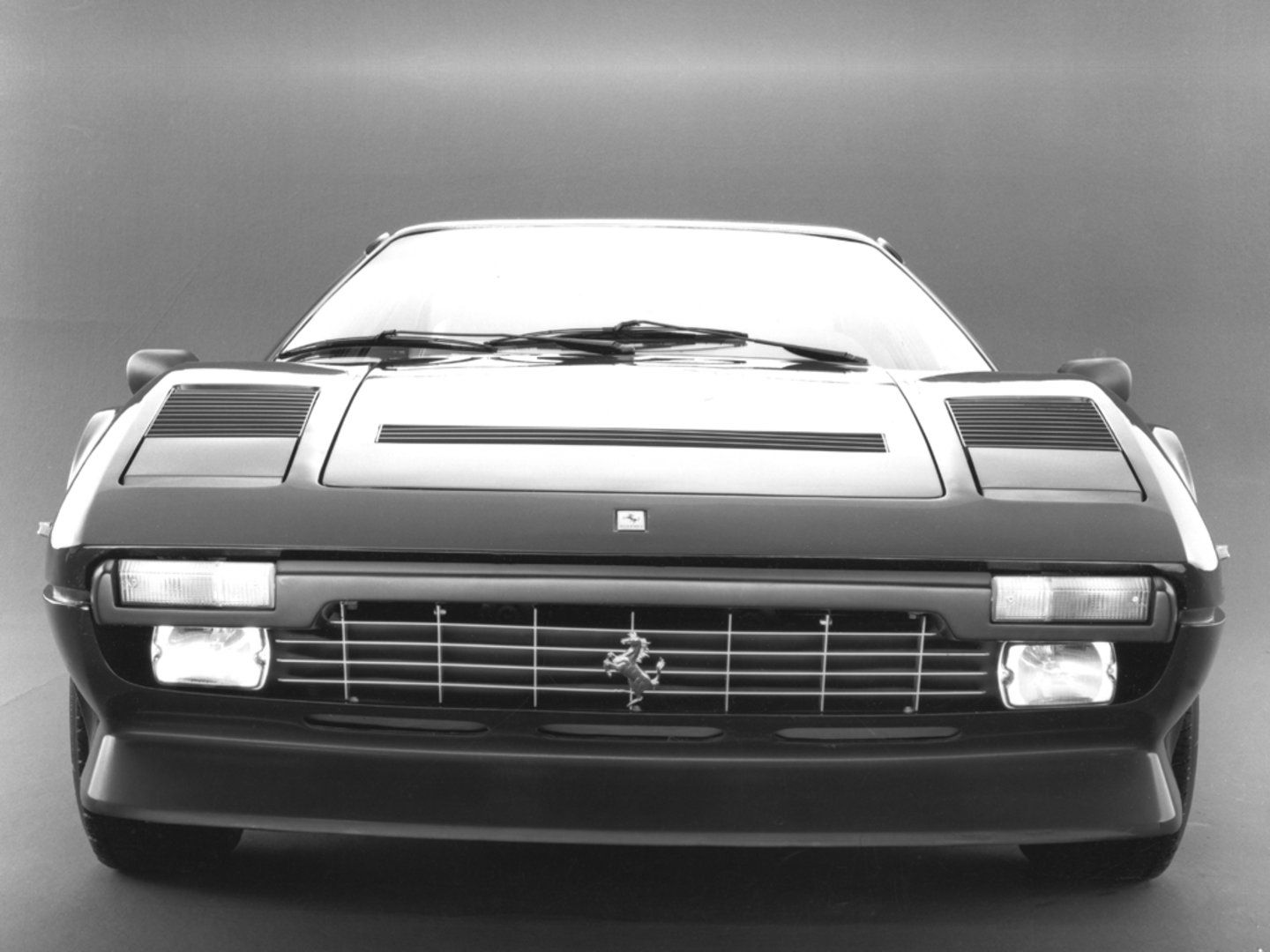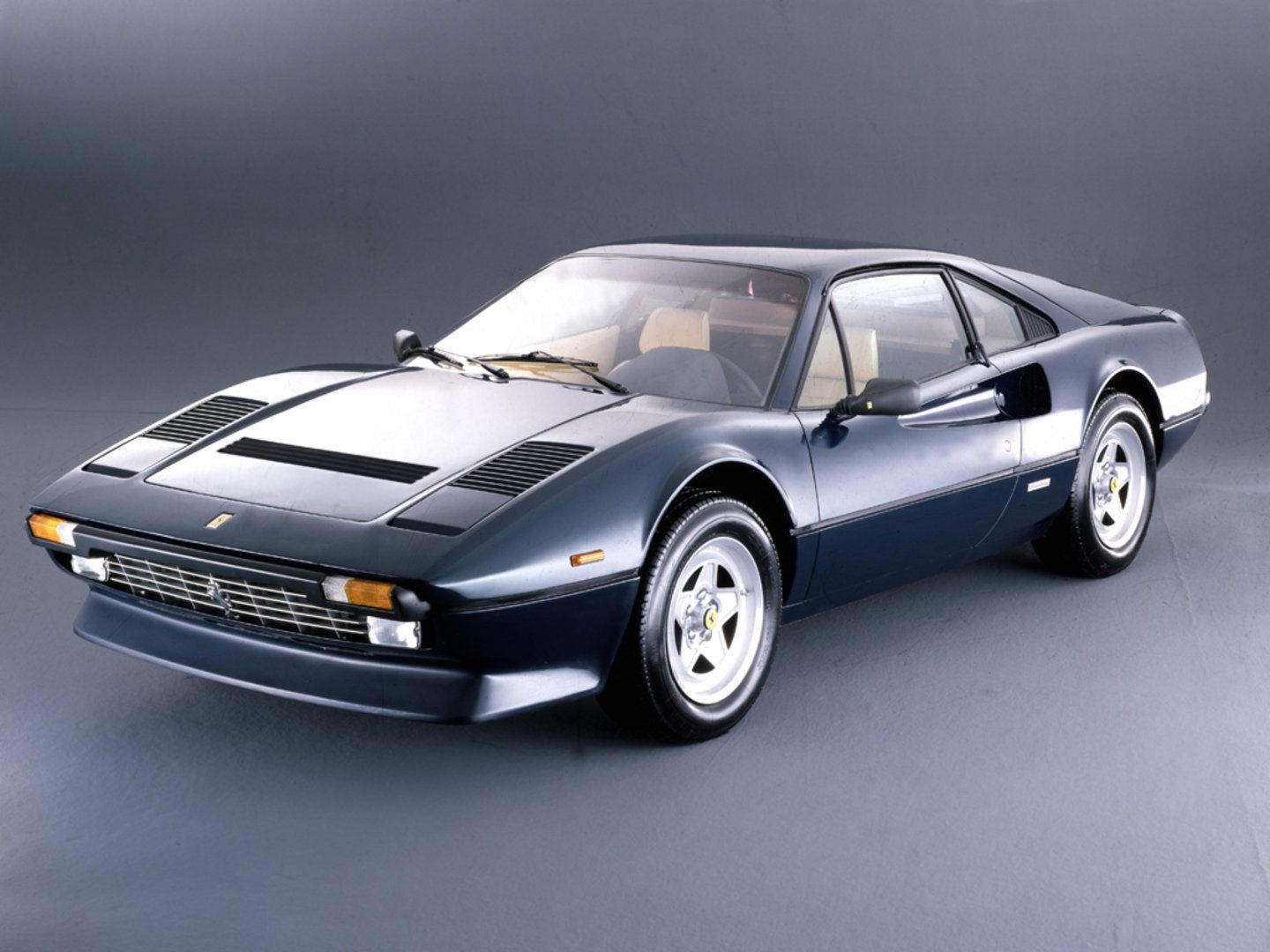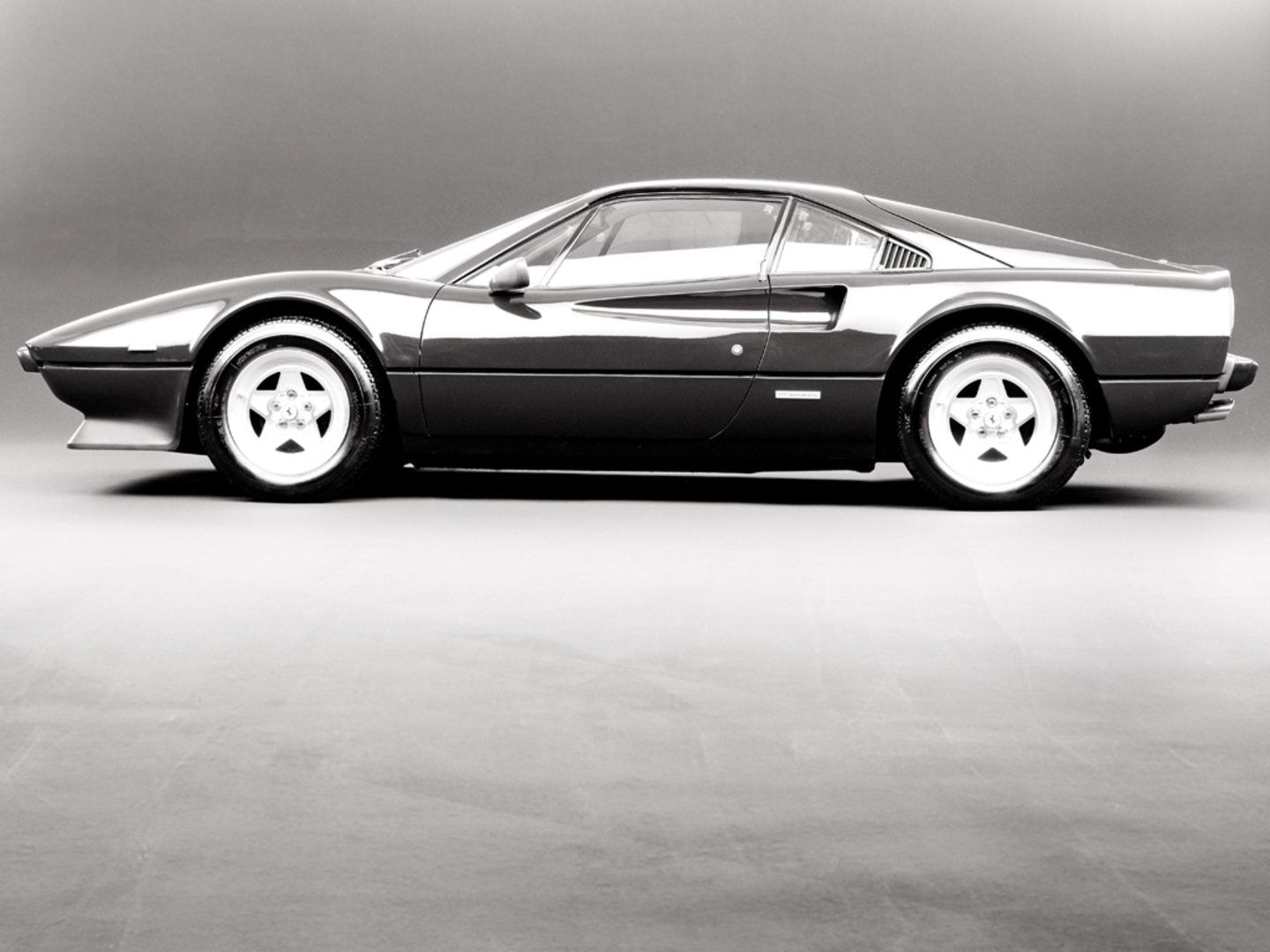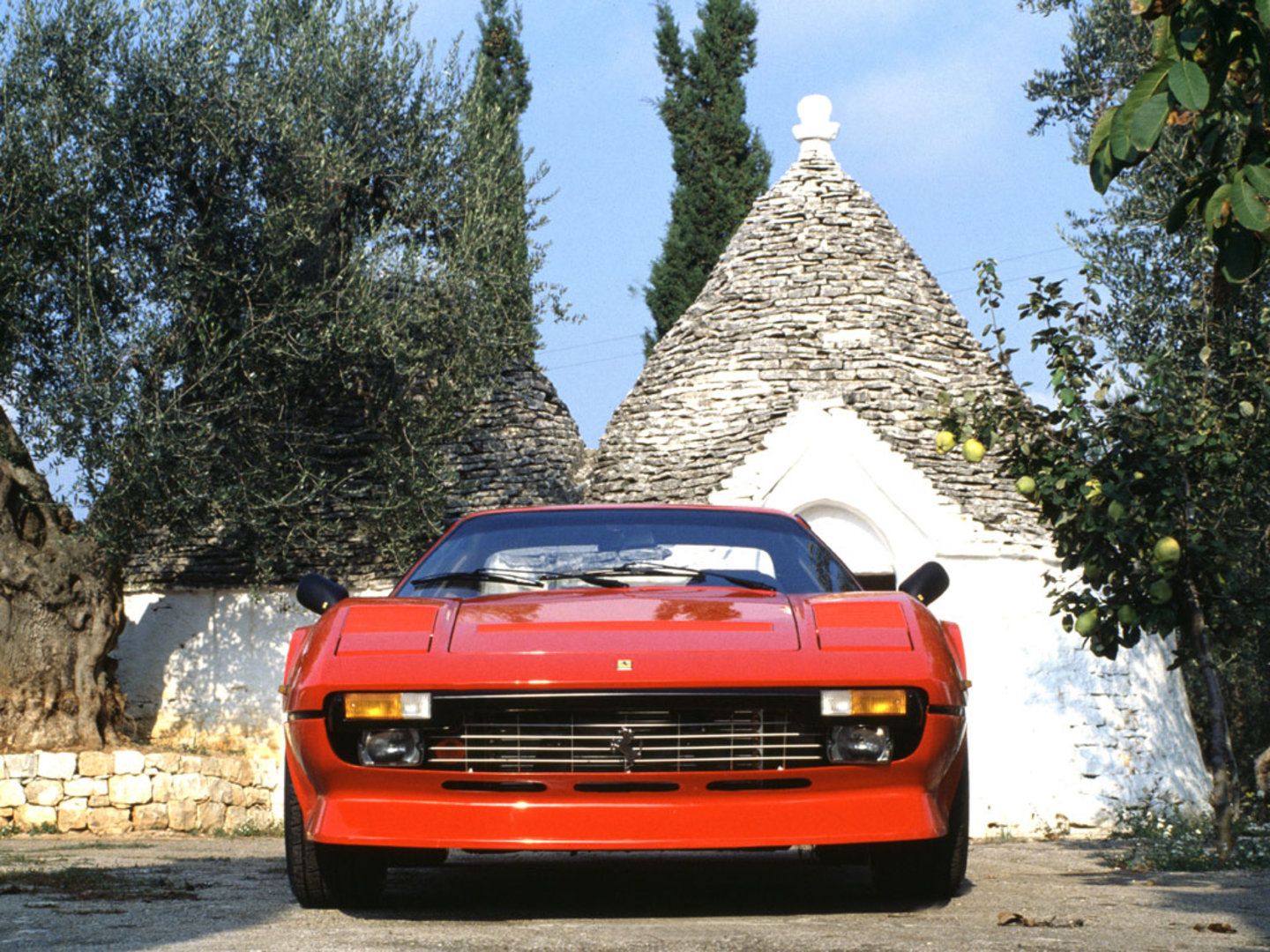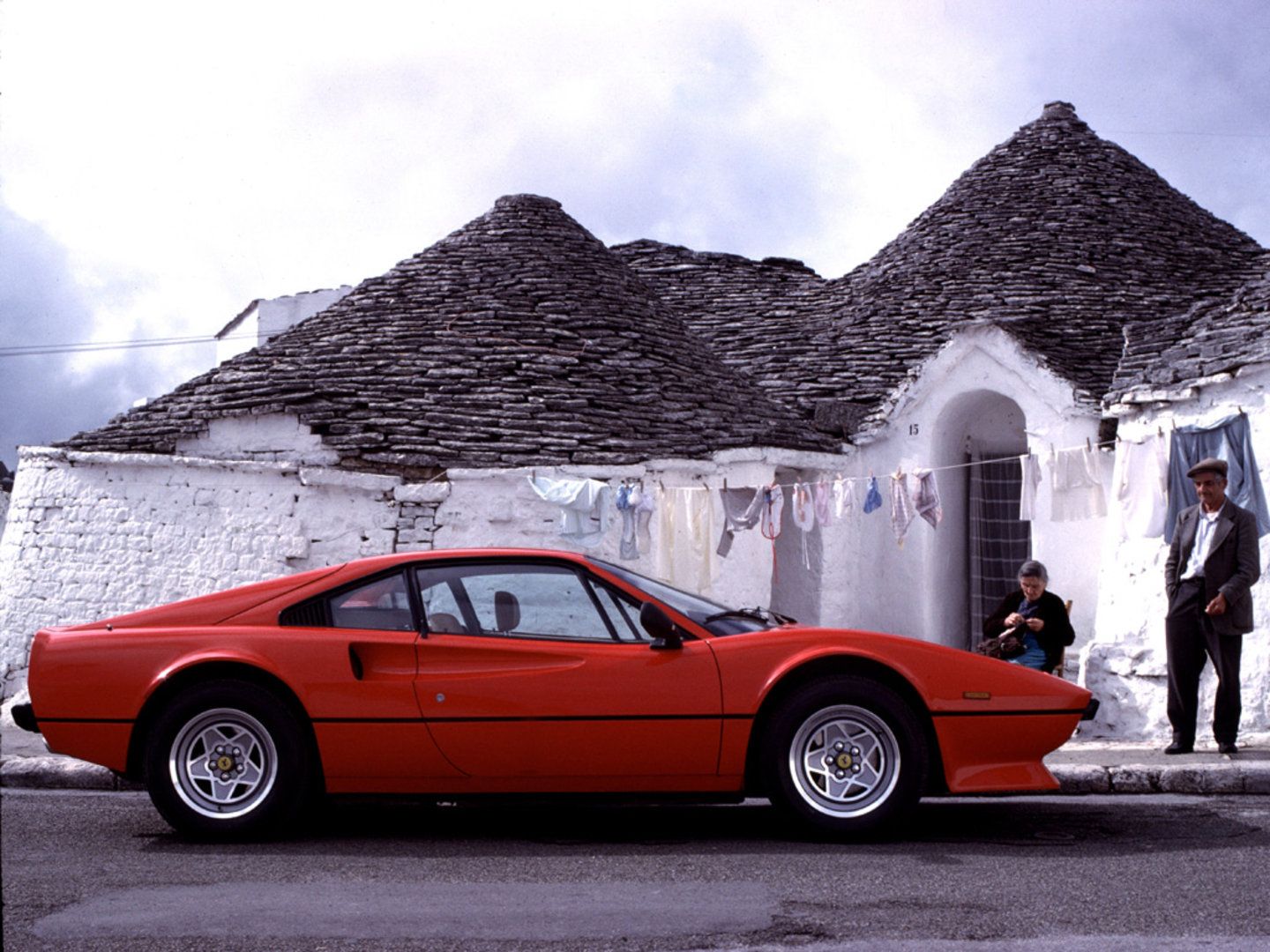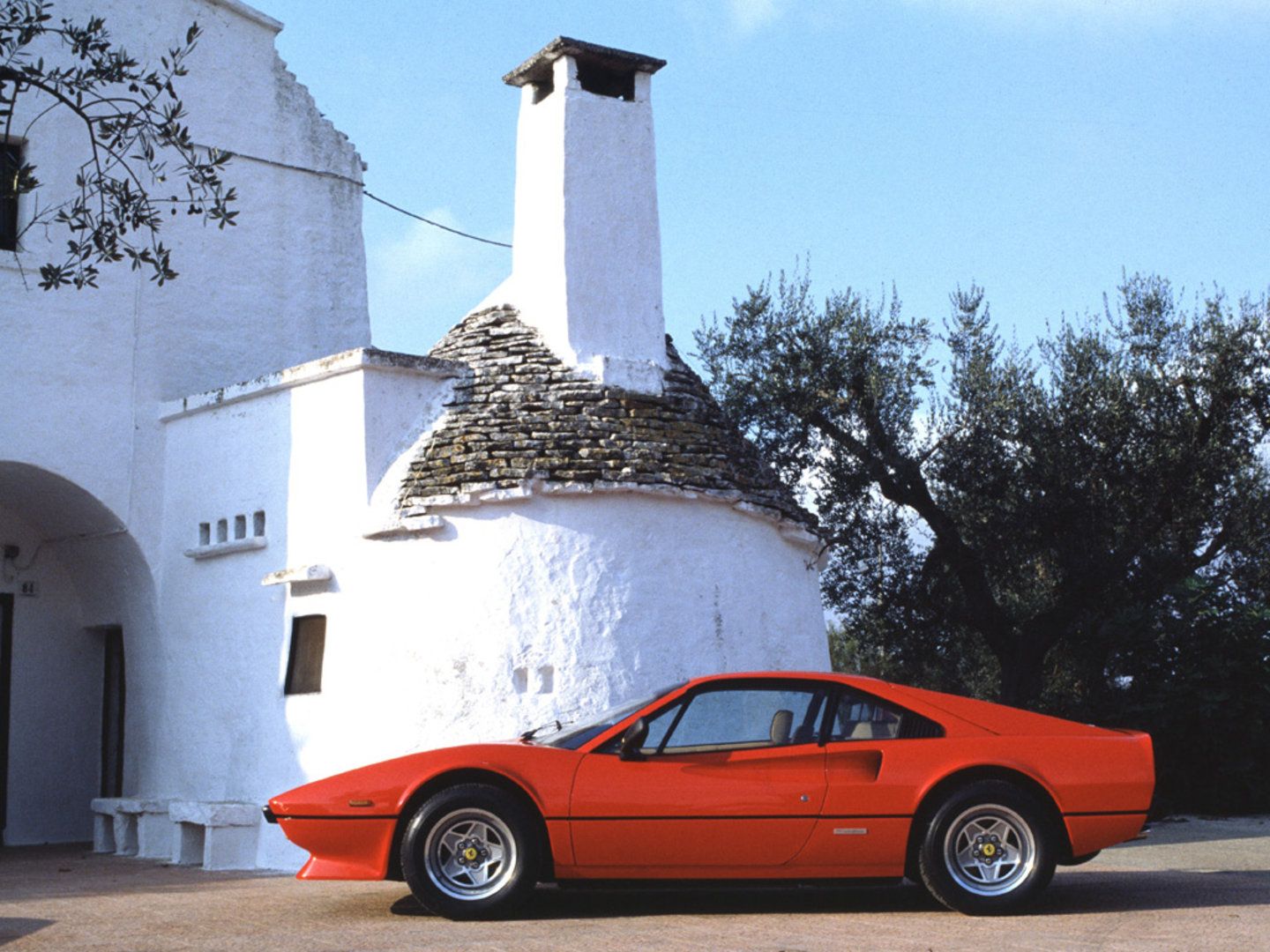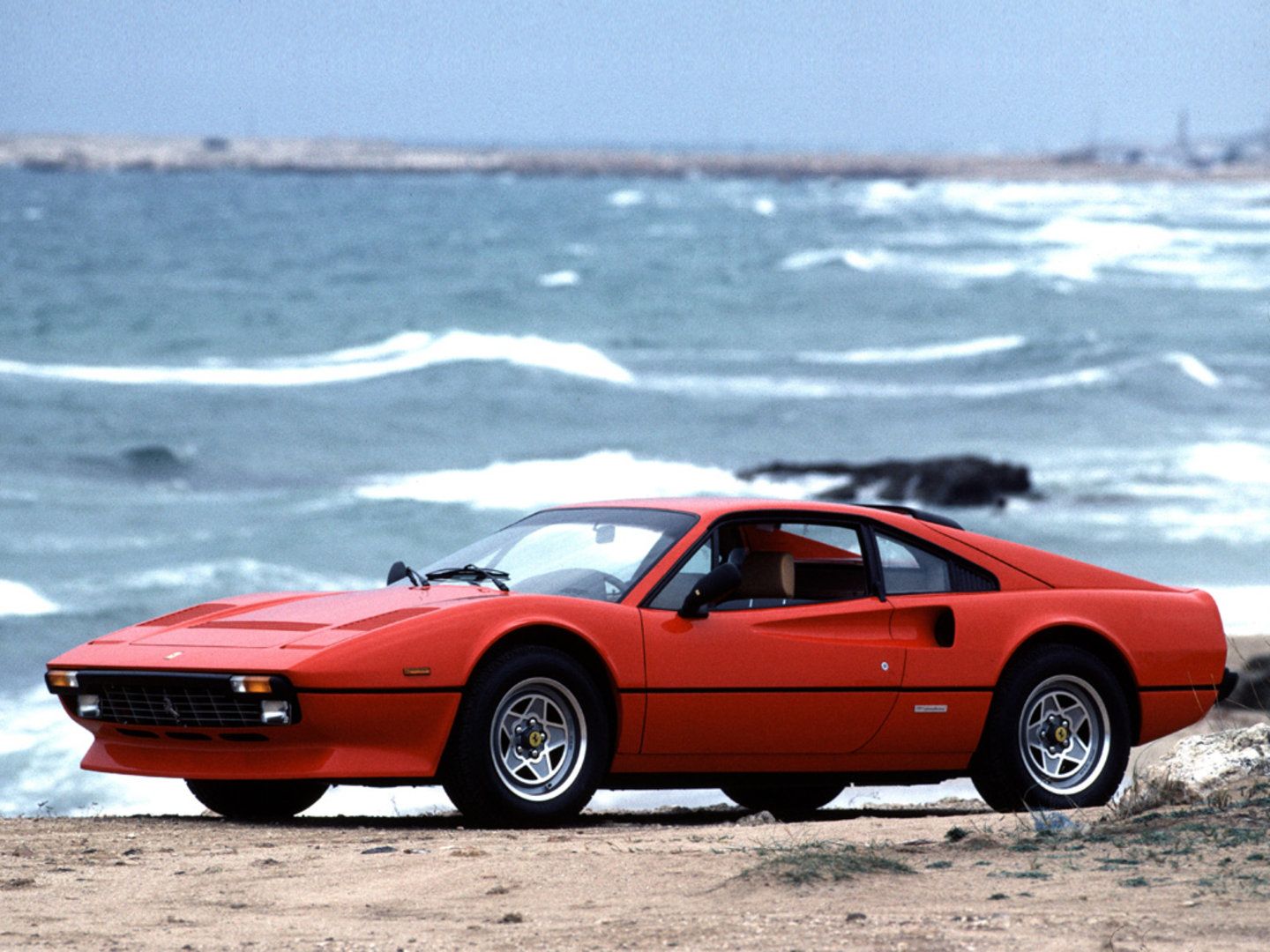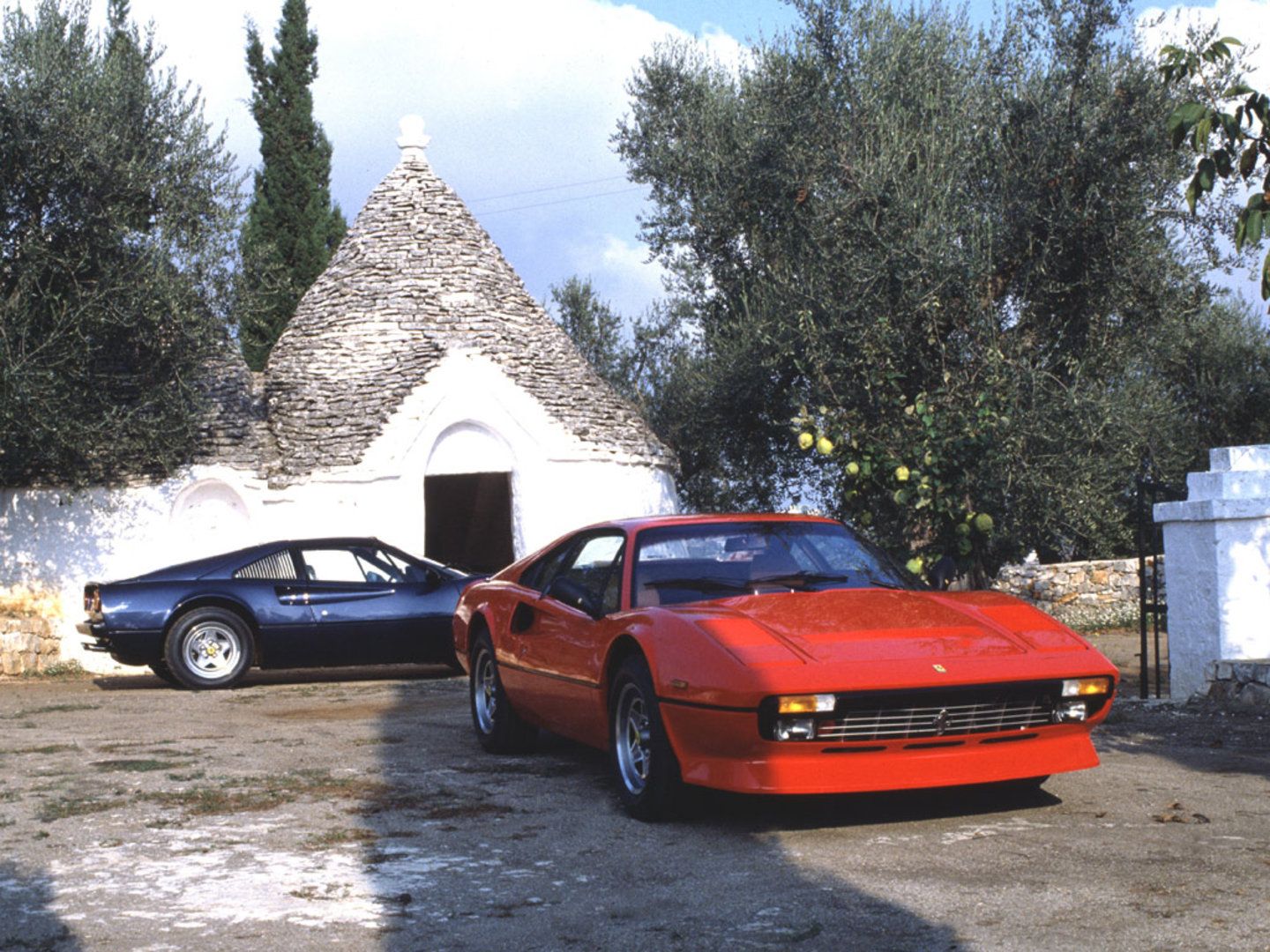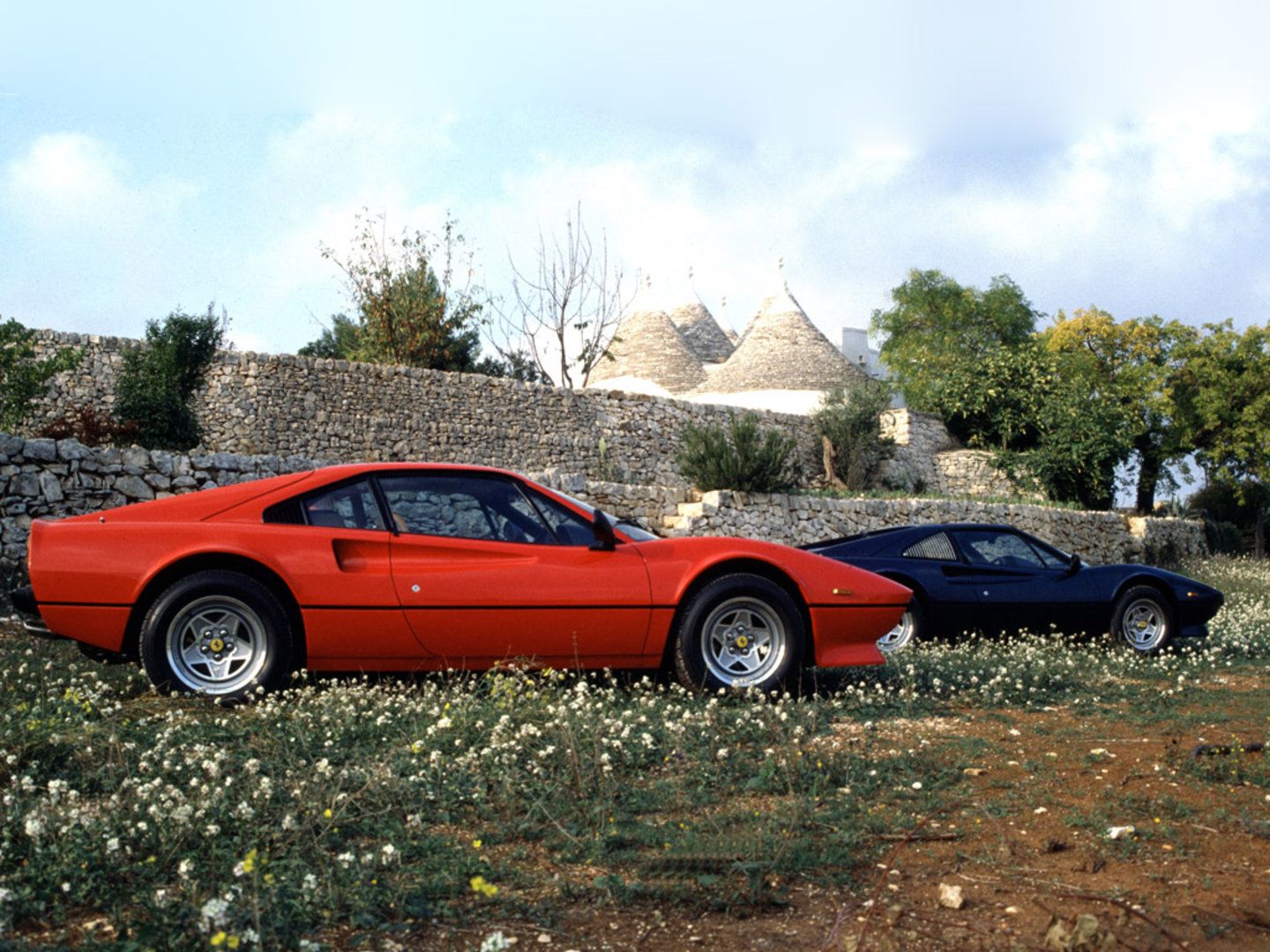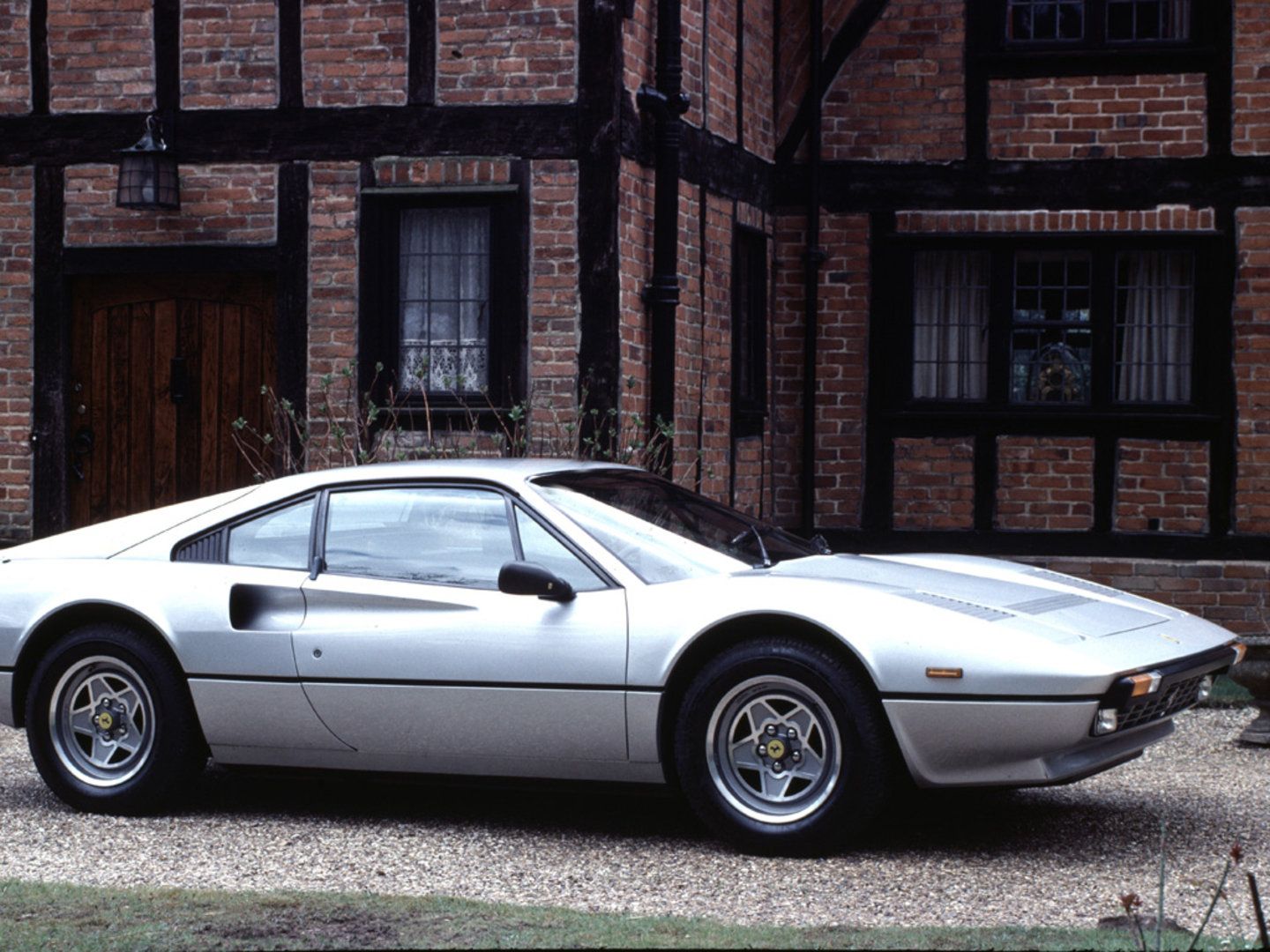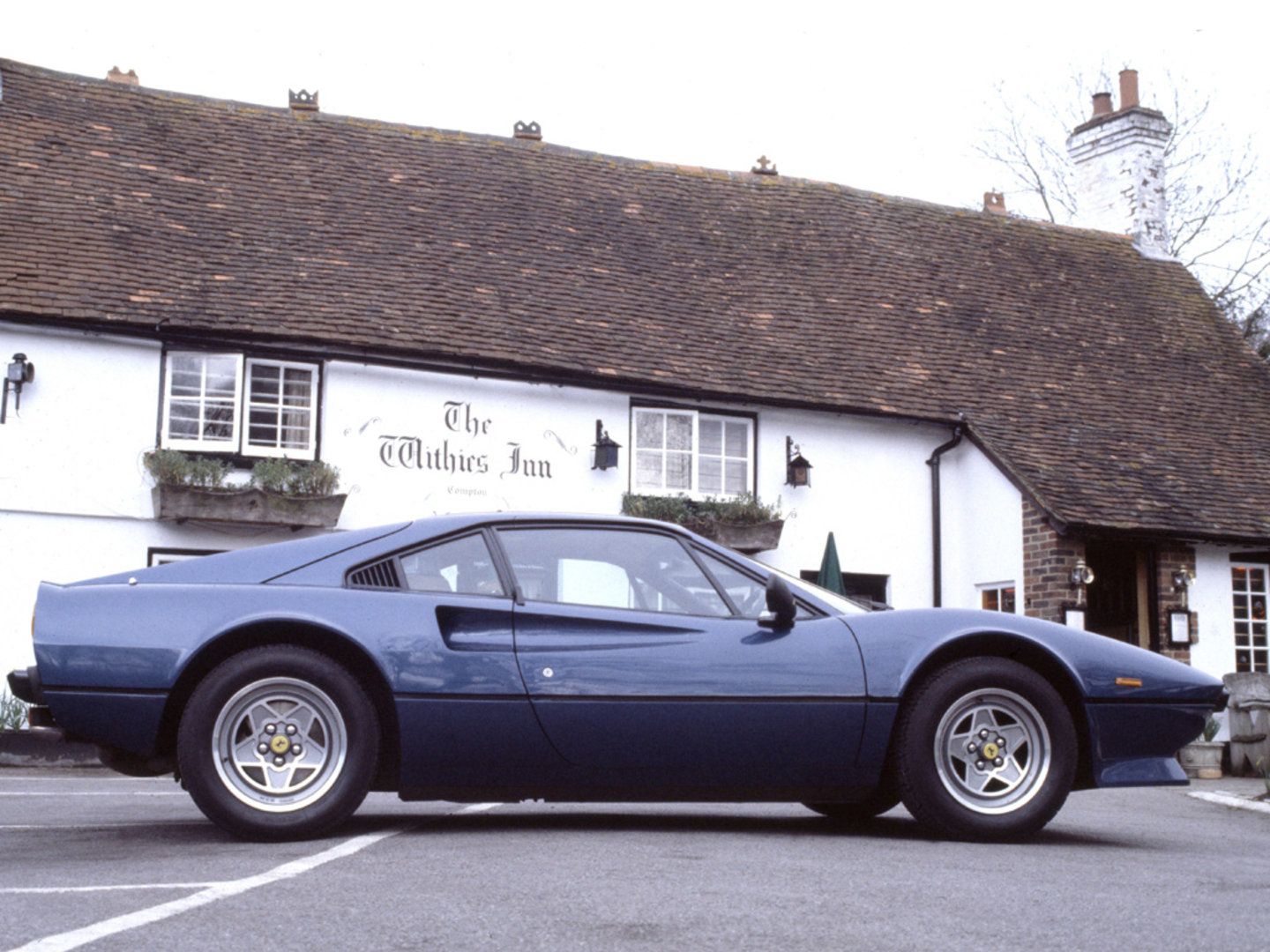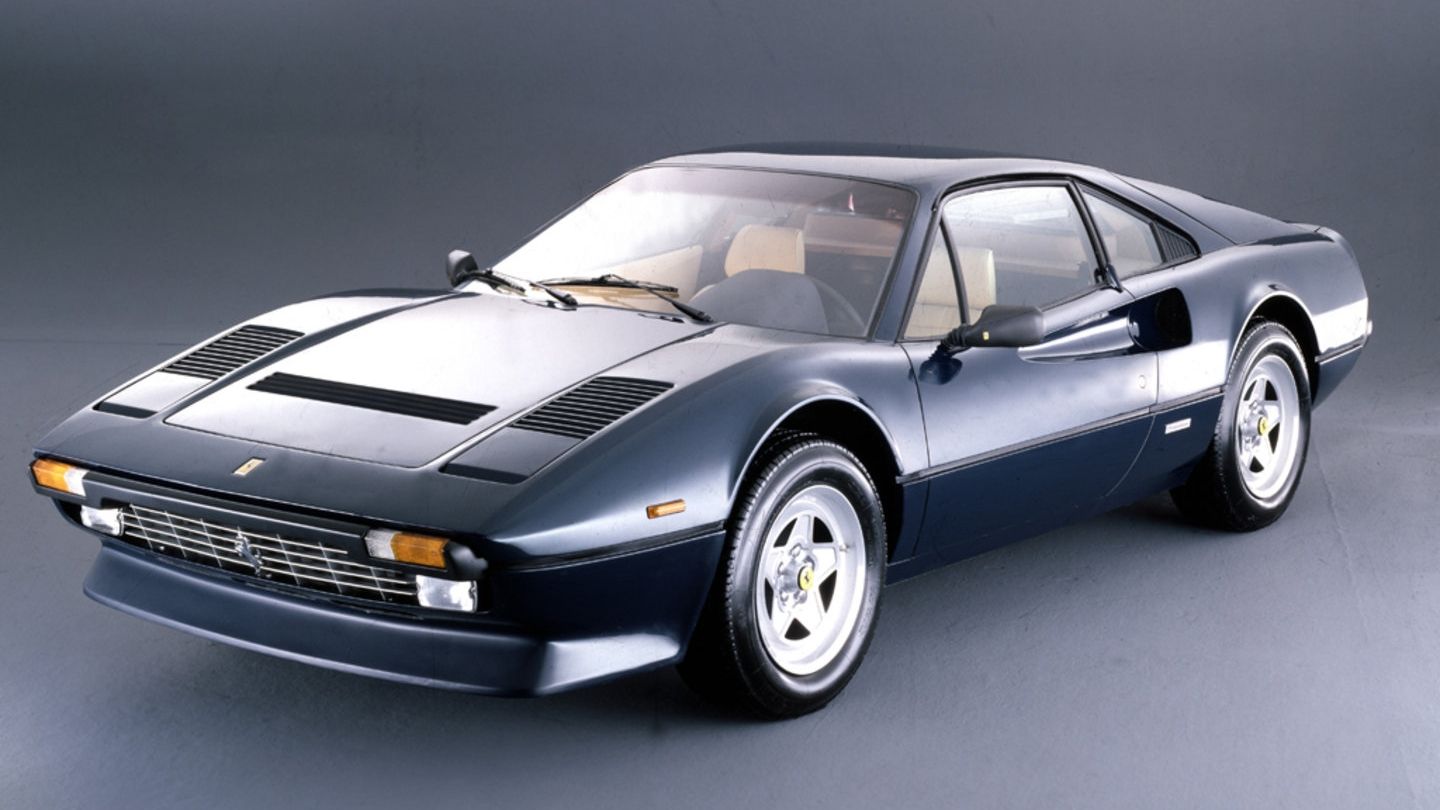The '70s were a pretty grim time for cars in America. The decade got off to a strong start, but new safety and emissions regulations would effectively kill off the muscle car for several decades, and cars in general became ever more bloated and sluggish. European cars weren't as popular in America as they are now, and they managed to hold out a bit longer before these regulations ruined the party for them as well. Some companies just stopped selling certain models here, while others complied and strangled the power output even on models for the European market.
One of the more tragic examples of this is the Ferrari 308.->ke3523 Launched in 1975, the 308 was a huge seller for Ferrari,->ke252 and it was just too important to give up on North American sales once it became time to reign in the emissions. The solution was fuel injection, and while it didn't so utterly destroy performance as completely as it did with any number of other cars, horsepower numbers did drop significantly. The fix to this was the car you see here, the 308 GTB Quattrovalvole. The car retained the fuel injection, but upgraded to a new head design that brought power back up to where it should be.
Continue reading to learn more about the Ferrari 308 GTB Quattrovalvole.
1982 - 1985 Ferrari 308 GTB Quattrovalvole
- Make: Array
- Model: 1982 - 1985 Ferrari 308 GTB Quattrovalvole
- [do not use] Vehicle Model: Array
Exterior
There were three different versions of the 308. I'm hesitant to call them generations, because they were all incredibly similar in the looks department, but there were still some subtle differences. The body was designed by Pininfarina and is a sort of mix between the curvacious body of its predecessor, the Dino, and the more angular look of the Daytona, which had only just gone out of production and handed its styling down to the Berlinetta Boxer models that now served as Ferrari's flagships.
There are a few things to look for if you're trying to spot a Quattrovalvole, such as the redesigned grille and the addition of extra louvers up front to help with cooling, a trait the 308 now shared with the bigger BB models. The other thing to look for is the change to power mirrors, which also have Ferrari logos on them, making them even easier to identify. Metallic paint was added as well, although only as an option.
Exterior Dimensions
|
Length |
4,230 MM (166.53 Inches) |
|
Width |
1,720 MM (67.71 Inches) |
|
Height |
1,120 MM (44.09 Inches) |
|
Wheelbase |
2,340 MM (92.12 Inches) |
|
Front track |
1,460 MM (57.48 Inches) |
|
Rear track |
1,460 MM (57.48 Inches) |
Interior
Like the exterior, the interior is largely unchanged from previous versions of the 308. It has a new steering wheel, a three-spoke design with a triangular center. The rest of the changes were options, such as the one to have a cloth center section for the seats instead of the standard all-leather upholstery. The other big one was air conditioning. 1982 might feel a late for such an expensive car to be adding air conditioning, especially since it wasn't even standard. But the 308 is a sports car, and one that was very purposefully built. On that note, it is also quite a small interior, but you should absolutely have expected that.
Drivetrain
The main differences between the three different types of 308 all come down to the 3.0-liter V-8 engines. Early models had a quartet of Weber carburetors, but this needed changing to comply with emissions regulations, and Bosch K-Jetronic was added in 1980. This turned the 308 GTB/GTS (the GTS is the Spider, a targa-topped version of the car) into the GTBi/GTSi. Power was down for this model and it didn't stay in production for long before Ferrari brought out the Quattrovalvole in 1982.
Essentially, this was the same as the fuel injected version, but with a new 32-valve head in place of the old 16-valve head. “Quattrovalvole” in fact, just means “four-valve,” as in four valves per cylinder. The first version of the car produced 240 horsepower, then it dropped to 202 horsepower (for U.S. market versions, European models had a few more, but really just a few) with the GTBi/GTSi. The Quattrovalvole brought the number back up to 240, and sales picked up again.
Drivetrain Specifications
|
Type |
rear, transverse, 90° V8 |
|
Bore/stroke |
81 x 71 mm |
|
Unitary displacement |
365.86 cc |
|
Total displacement |
2926.90 cc |
|
Compression ratio |
9.2 : 1 |
|
Maximum power |
240 HP @ 7,000 RPM |
|
Maximum torque |
191 LB-FT @ 5,000 RPM |
|
Top speed |
255 KM/H (158 MPH) |
Prices
No version of 308 is especially rare (unless you count the 308-based 288 GTO, but you shouldn't), as this was Ferrari's first really serious volume seller. It wasn't quite made in Collora quantities, but compared to any Ferrari model to come before it, it's common. The Quattrovalvole is not the most valuable version of the 308, but it isn't far behind. A 308 with the carburetors will run about $75,000 on average, while the Quattrovalvole sits at about $70,000. If you're looking to save some money, the way to go is the GTBi/GTSi, as the least powerful 308 is predictably the least popular. So despite being the rarest of the 308s, it averages $46,000, quite the significant drop in price. Amazingly, that $75,000 original 308 would have only cost you about $26,000 just three years ago. Hard to say how long the current prices will stay where they are.
Competition
Porsche 930 3.3
When the 308 first launched, it had the original 930 to compete with, but by the time the Quattrovalvole came around, Porsche had upgraded the 930 from a 3.0-liter engine to a 3.3-liter engine, and also added an intercooler. Power was up to 300 horsepower, and that's a difference over the 308 that you'd likely notice. The downside was that the 930 was prone to massive amounts of turbo lag, as early turbocharged cars tended to be, while the Ferrari gave a nice, linear application of naturally aspirated power. The choice between the two cars in 1982 must have been excruciating.
Read our full review on the Porsche 930 here.
Lotus Turbo Esprit
Launched in 1980, the Turbo Esprit was a whole different car than the regular Esprit. They obviously had a fair amount in common, but under the skin, the Turbo was an even more serious performance machine. It could beat a 308 to 60mph, despite having 220 horsepower to the 308's 240. The looks are much more angular then those of the Ferrari, and all forms of the Esprit have long provided an interesting alternative to Italian sports cars.
Read our full review on the Lotus Turbo Esprit here.
Conclusion
Good as the Quattrovalvolewas, the 308 had been out long enough at that point that what Ferrari really needed was a replacement, not just a fix. This is why the 308 was replaced just a couple of years later in 1985 by the 328, essentially an evolved version of the 308. But it should be noted that the engine in the 328 wasn't really changed very much. It was enlarged slightly from the 308's and got a new and improved ignition system, but was otherwise largely the same. So the Quattrovalvole was more than just a stopgap to keep sales from flagging while Ferrari worked on the 328, it was an important evolutionary step in the history of the Ferrari V-8.


